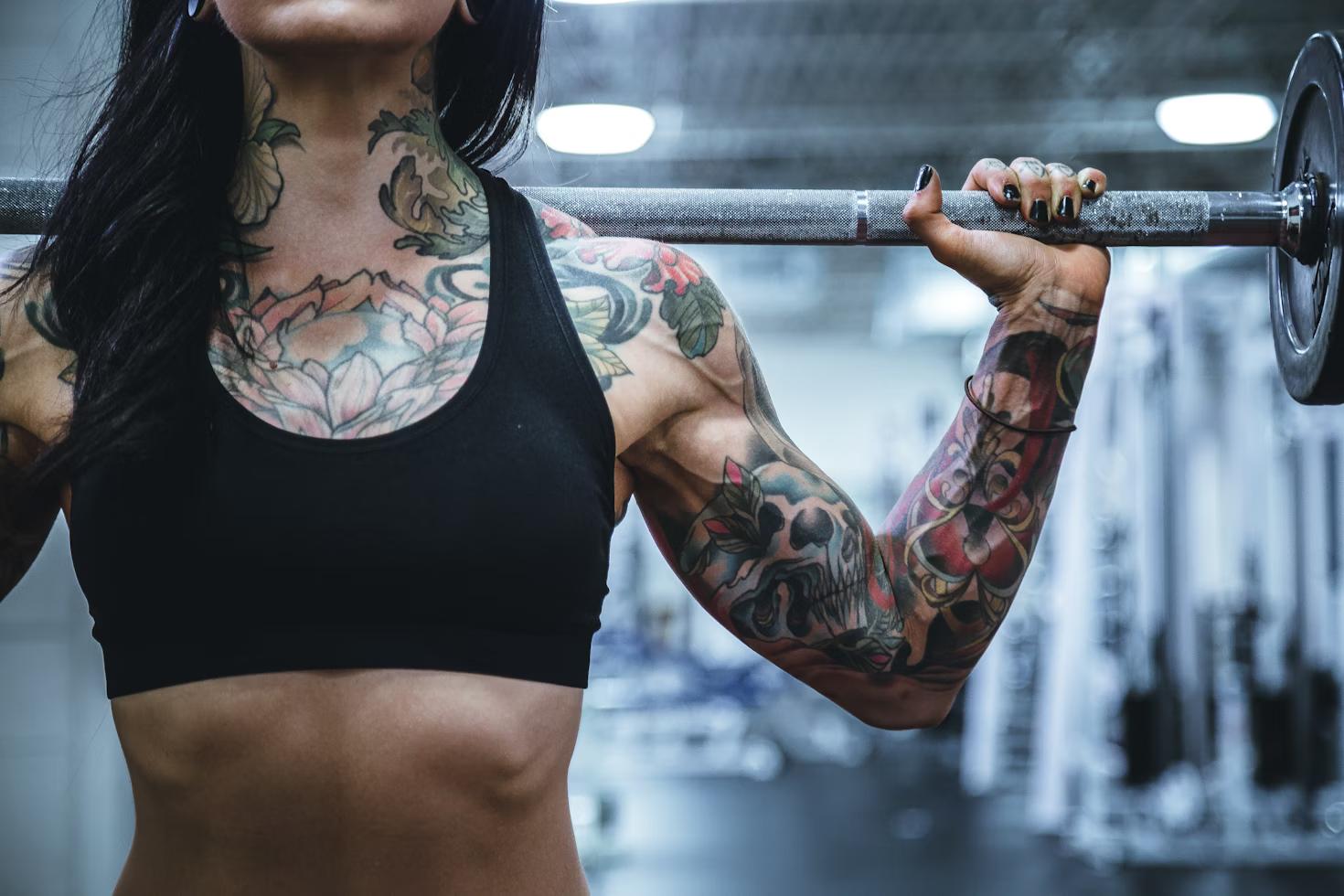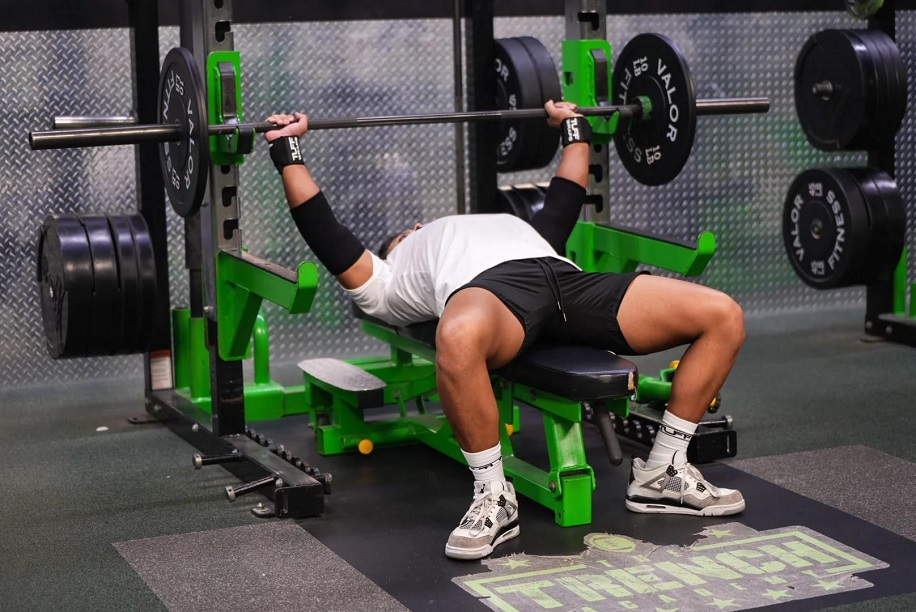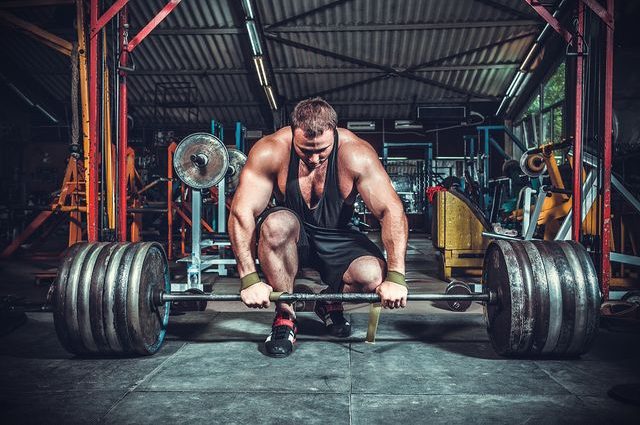When embarking on a fitness journey, the choice between powerlifting and bodybuilding can shape your path, solidify your goals, and define your routine. Both sports, steeped in rich history and fervent dedication, offer unique challenges and rewards. However, despite their common foundation in strength and muscle development, they diverge significantly in philosophy, training methods, and end goals. Understanding these differences is key to choosing the discipline that aligns best with your fitness aspirations.
Whether you seek the thrill of hoisting colossal weights, driven by the raw measure of strength, or yearn to sculpt your body into a masterpiece of musculature, delving into the distinctive worlds of powerlifting and bodybuilding will illuminate the path that resonates with your spirit and physical ambitions. Set forth on this exploration with an open mind, and let the journey towards strength, aesthetics, or perhaps a blend of both, begin.
Powerlifting vs Bodybuilding

Definition and Overview of Powerlifting
Powerlifting is a form of strength training that emphasizes lifting as much weight as possible in three primary lifts: the squat, the bench press, and the deadlift. Each of these exercises targets different muscle groups, and the goal is to maximize the total weight lifted across all three. Powerlifting is not just about brute force; it requires technique, strategy, and an incredible amount of mental and physical discipline. Competitors in powerlifting are divided into classes based on weight and age to ensure fair competition, and they have three attempts at each lift during a competition. The focus here is purely on strength and the power of the human body to lift heavy weights above all else.
Definition and Overview of Bodybuilding
Bodybuilding, on the other hand, is an aesthetic endeavor focused on achieving a highly muscular and well-defined physique. It involves rigorous weight training, diet control, and sometimes, cardiovascular exercises to reduce body fat and enhance muscle definition. Unlike powerlifting, where success is measured by the amount of weight lifted, bodybuilding success is determined by subjective judging based on an athlete’s appearance. Judges look for muscle size, symmetry, and definition, rewarding well-proportioned bodies and those who can present their muscles through poses effectively. Bodybuilding is as much an art form as it is a sport, requiring athletes to sculpt their bodies into appealing shapes and forms.
Training Approaches
Emphasis on Strength in Powerlifting
Powerlifting training is centered around increasing one’s maximum strength in the three competition lifts. Training often includes:
- High-intensity workouts focusing on lower rep ranges with heavier weights.
- Incorporating plenty of rest between sets to fully recover and perform at maximum capacity.
- Utilizing accessory exercises that strengthen the muscles involved in the main lifts.
This approach to training builds incredible strength and fortitude, preparing athletes to handle the heaviest weights their bodies can muster.
Emphasis on Muscle Size and Definition in Bodybuilding
Bodybuilding training, in contrast, prioritizes muscle hypertrophy (growth) and definition. The training regimen includes:
- A higher volume of exercises with more repetitions and lighter weights compared to powerlifting.
- Shorter rest periods between sets to increase muscle endurance and promote a higher rate of muscle growth.
- A diversified exercise routine that targets all muscle groups from various angles to ensure balanced and comprehensive muscular development.
Athletes in bodybuilding focus on refining and sculpting each muscle group, aiming for a visually stunning physique through relentless dedication to their craft.
Competition Formats
The journey through the world of fitness is filled with various paths, each leading to its unique pinnacle of success, especially in the realms of powerlifting and bodybuilding. The formats of competition in these two disciplines are as different as the athletes who train for them.
- Types of competitions in powerlifting
Powerlifting is a sport that celebrates pure strength. Competitors are divided based on their weight class to ensure fairness. The competition consists of three main lifts: the squat, the bench press, and the deadlift. Each competitor is given three attempts at each lift, aiming for the maximum weight they can handle. The sum of the best attempts at each lift determines the athlete’s total score. The simplicity of powerlifting competitions belies the years of rigorous training and mental fortitude required to stand out. Various federations host powerlifting meets, each with its slight variations in rules, but the core of the sport remains a test of raw strength.
- Types of competitions in bodybuilding
In stark contrast, bodybuilding competitions focus on the aesthetic aspects of fitness. They are a showcase of muscle symmetry, size, definition, and overall physique presentation. Competitors go through pre-judging rounds, perform a series of mandatory poses, and have their physiques compared in a lineup. The final rounds might include individual posing routines set to music. Judges look for a balanced, well-defined physique that exhibits an ideal of human form and beauty. There are various classes in bodybuilding, including open, natural, and classes based on age or weight, allowing a wide range of participants.
Physique Goals
The goals within powerlifting and bodybuilding also reflect the differences in competition style and training focus.
- Desired physique in powerlifting
For powerlifters, the ultimate goal is to build a body capable of lifting maximal weights. The focus is on increasing muscle size and strength, particularly in the muscles involved in the three main lifts. Body fat percentage is often less of a concern, except insofar as it impacts the lifter’s weight class or performance. This doesn’t imply negligence towards overall health or body composition, but rather, a prioritization of strength and functional muscle over aesthetics.
- Desired physique in bodybuilding
Bodybuilders, on the other hand, sculpt their bodies with an artist’s eye for detail. They aim for a balanced development of all muscle groups, achieving a high degree of muscle definition and minimal body fat. This requires not only intensive and targeted resistance training but also meticulous attention to diet and sometimes, cardiovascular training to achieve the desired lean appearance. The ultimate aim is to present a physique that embodies an idealistic notion of physical perfection, through symmetry, proportion, and clear muscular separation.
Whether your goal is to harness the raw power of strength or to sculpt a masterpiece of muscle, understanding these distinctions can guide you toward the discipline that resonates most deeply with your personal aspirations and innate capacities.
Training Techniques
In the quest for physical excellence, the paths of powerlifting and bodybuilding diverge, with each discipline demanding its unique regimen of exercises, reps, and intensity levels to sculpt the body towards its respective ideal.
- Specific exercises in powerlifting
Powerlifting zeroes in on enhancing one’s ability to lift maximum weights in three core lifts: the squat, bench press, and deadlift. These exercises form the foundation of a powerlifter’s training, designed to not only increase muscle strength but also to improve technique and lifting efficiency. Accessory exercises, such as rows, shoulder presses, and core work, are also integral. They support the main lifts by targeting and strengthening the assisting muscle groups and improving overall balance and power.
- Specific exercises in bodybuilding
Bodybuilding, in contrast, adopts a more holistic approach to muscle enhancement, aiming for symmetry and muscularity rather than outright strength. Exercises are varied and encompass a wider range of movements targeting all major and minor muscle groups. Isolation exercises like bicep curls, tricep extensions, leg curls, and calf raises are staples, alongside compound movements like squats and presses. This broader exercise spectrum ensures the development of both the large and the small muscle groups, contributing to a well-defined and proportionate physique.
- Rep ranges and intensity in powerlifting and bodybuilding
In powerlifting, training usually revolves around lower rep ranges (1-5 reps) at higher intensities to build maximal strength. In contrast, bodybuilding favors higher rep ranges (8-12 reps) with moderate to high intensity, optimizing muscle hypertrophy (growth). While powerlifters focus on lifting as heavy as possible, bodybuilders concentrate on muscle tension and time under tension to achieve muscle fatigue and growth.
Diet and Nutrition
The fuel for the journey differs significantly between powerlifting and bodybuilding, with each discipline requiring its tailored dietary strategy to support its distinct physical demands.
- Caloric intake and macronutrient breakdown in powerlifting
Powerlifters often prioritize a higher caloric intake to support their rigorous training sessions and to increase body mass, which in turn can help improve leverage and lifting ability. The diet is rich in proteins for muscle repair and growth, carbohydrates for energy, and a fair amount of fats for hormonal health. The macronutrient breakdown usually leans towards a higher intake of proteins and carbohydrates, ensuring that the body is well-fueled for strength and recovery.
- Caloric Intake and Macronutrient Breakdown in Bodybuilding
Bodybuilders, aiming for muscle gain with minimal fat, adopt a more calculated approach to nutrition. The emphasis is on a balanced diet high in protein to foster muscle growth and repair but with a more careful management of carbohydrates and fats to sculpt a lean and defined physique. During the bulking phase, bodybuilders may increase their caloric intake, closely monitoring the balance of macronutrients to maximize muscle gains while minimizing fat accumulation. Conversely, in the cutting phase, the focus shifts towards reducing calorie intake and adjusting macronutrients to shed fat and accentuate muscular definition.
Recovery and Rest
Recovery and rest are crucial aspects of any fitness routine, but they hold particular importance in the realms of powerlifting and bodybuilding. Both disciplines demand rigorous physical exertion, pushing the body to adapt to heavy loads or meticulous muscle sculpting. Thus, understanding how to effectively recover and rest becomes a cornerstone of success.
Importance of Rest in Powerlifting
In powerlifting, the focus is on lifting as much weight as possible in three key exercises: the squat, bench press, and deadlift. This requires immense bursts of strength, often pushing the body’s limits. Because of this, rest is paramount. Adequate rest between sessions allows for the repair of muscle fibers, which are often subject to high levels of strain during powerlifting workouts. Additionally, rest days are necessary to prevent overtraining, which can lead to injuries, and hinder progress. For powerlifters, recovery isn’t just about physical rest but also includes active recovery methods such as light stretching, mobility work, and sometimes, therapeutic techniques like massage or foam rolling to aid muscle recovery and flexibility.
Importance of Recovery in Bodybuilding
Recovery in bodybuilding, though similarly crucial, takes on a slightly different focus. Here, the goal is muscle growth and definition, achieved through repetitive exercises targeting specific muscle groups. This results in microscopic tears in the muscle fibers, which then need to repair and grow during recovery. Bodybuilders often employ a strategy of rotating the muscle groups they work on, allowing some parts of the body to recover while they train others. Nutrition also plays a vital role in recovery for bodybuilders, with a big emphasis on protein intake to aid muscle repair. Additionally, techniques like stretching, foam rolling, and adequate sleep are key components of a bodybuilder’s recovery regimen.
Lifestyle and Commitment:

Embarking on a powerlifting or bodybuilding journey doesn’t just change how you exercise; it alters your lifestyle. The commitment required for both is substantial, affecting how you schedule your day, plan your meals, and even spend your free time.
Time Commitment in Powerlifting
Powerlifting demands a significant time investment, not just in the gym but outside of it as well. Training sessions, although not typically daily, can last several hours, focusing on not only the main lifts but also accessory work to build up supporting muscles and prevent injury. Beyond the time spent lifting weights, powerlifters also need to dedicate time to recovery practices, nutritional planning, and sometimes, mental preparation strategies to stay focused and overcome the psychological challenges of lifting heavy weights. This can mean prioritizing training and recovery over other activities to ensure progressive overload and continual strength gains.
Time Commitment in Bodybuilding
Bodybuilding requires a daily commitment to both workout and diet to sculpt the desired physique. Training sessions can span one to two hours, focusing on different muscle groups to achieve balance and definition. The frequency of training, combined with the necessity of strict nutritional planning, makes bodybuilding a lifestyle that requires meticulous scheduling and discipline. Moreover, preparation for competitions introduces even more layers of commitment, including costume planning, choreography, and often, tanning and grooming practices. This relentless devotion to the craft marks bodybuilding as not just a hobby, but a way of life for many enthusiasts.
Conclusion
In the arena of fitness and strength, powerlifting and bodybuilding stand as two titans, each with its unique philosophy and set of goals. Powerlifting focuses on maximizing strength in three primary lifts, offering a straightforward, measurable path to gauging progress. Bodybuilding, on the other hand, prioritizes aesthetic muscle development and symmetry, creating a visual testament to one’s dedication and hard work.
Choosing between powerlifting and bodybuilding ultimately depends on your aspirations in the gym. If your heart races at the thought of lifting heavier weights and conquering new personal records, powerlifting may be your calling. Alternatively, if you dream of sculpting your physique into a work of art, bodybuilding could be the path that leads you to fulfillment.
- If you seek the thrill of competition based strictly on strength, venture into powerlifting.
- If crafting an aesthetically pleasing physique fulfills you, pursue bodybuilding.
Remember, the journey through either discipline is one of self-discovery, resilience, and above all, passion. Let your personal goals shape your path, and may the journey you choose bring you not just the physical transformation you seek, but a stronger, more focused version of yourself.
